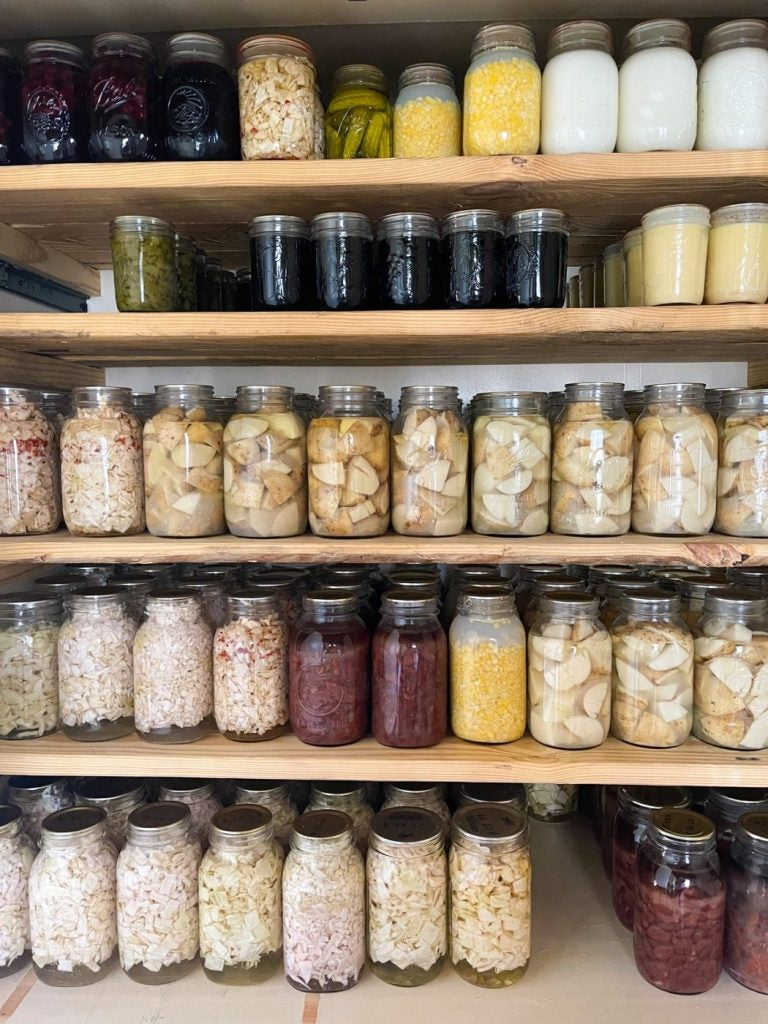
Mastering the Art of stockpiling the Basic Food.
Are you finding it challenging to maintain a well-stocked pantry during uncertain times? Look no further - this article will guide you through mastering the art of stockpiling basic food. Whether you're preparing for a natural disaster, a global crisis, or simply want to be prepared for unexpected circumstances, having a well-stocked pantry can provide you with peace of mind. In this comprehensive guide, we will explore the essentials of stockpiling basic food, giving you tips and tricks to ensure you are well-prepared for any situation. From choosing the right foods to understanding the ideal storage methods, we will cover everything you need to know to create a stockpile that meets your family's needs. Our brand's voice is all about empowerment and practicality. We believe that everyone can take steps to be more self-sufficient, and stocking up on basic food items is a great place to start. By the end of this article, you will feel confident in your ability to navigate the world of stockpiling and have a well-rounded understanding of how to create a sustainable and reliable food supply. So, let's embark on this journey together and unlock the secrets of successful stockpiling!
Benefits of Stockpiling Basic Food
Stockpiling basic food comes with a myriad of benefits that can enhance your quality of life, especially during uncertain times. One of the primary advantages is the peace of mind that comes from knowing you are prepared for emergencies. Whether it's a natural disaster, an economic downturn, or a personal crisis, having a well-stocked pantry allows you to focus on other pressing matters without the added worry of food scarcity.
In addition to the peace of mind, stockpiling can also result in significant financial savings. Purchasing items in bulk often comes with discounts, allowing you to stretch your budget further. Moreover, when you have a well-stocked pantry, you’re less likely to make impulse buys or be tempted to order takeout, which can be financially draining. Over time, these savings can accumulate, enabling you to allocate funds to other essential needs or even enjoy a little treat.
Another benefit worth noting is the increased self-sufficiency that comes with stockpiling. In an ever-changing world, being reliant on grocery stores can sometimes lead to panic during shortages. By having a variety of essential foods at your disposal, you can maintain your household's nutritional needs without being completely dependent on external sources. This empowerment fosters resilience and encourages a more sustainable lifestyle.
Essential Foods to Stockpile
When it comes to stockpiling, knowing which foods to choose is crucial for ensuring you have a balanced and nutritious supply. Start with staples that have long shelf lives, such as rice, pasta, and canned goods. These items are not only versatile but also provide the foundation for many meals. Opt for whole grains whenever possible, as they offer more nutrients compared to their refined counterparts.
In addition to grains, consider incorporating legumes such as beans, lentils, and chickpeas into your stockpile. These protein-packed options are not only cost-effective but also have a long shelf life. They can serve as the main component of various dishes, from soups and stews to salads and sides. Additionally, they are rich in fiber, making them a nutritious choice for any family.
Don't forget about the importance of preserving fruits and vegetables in your stockpile. Canned or frozen options can be invaluable when fresh produce is unavailable, ensuring you still receive essential vitamins and minerals. Look for low-sodium canned vegetables and fruits packed in natural juices or water to keep your stockpile healthy. Having a variety of these foods on hand will enable you to create balanced meals, regardless of external circumstances.
How to Properly Store Basic Food Items
Understanding proper storage techniques is essential for maximizing the lifespan of your stockpiled food. Begin by selecting a cool, dry place in your home to store your items. A pantry, basement, or cupboard away from direct sunlight is ideal. Keep in mind that heat and moisture can significantly impact the quality of your food, so avoiding these elements will help in maintaining freshness.
Utilizing airtight containers is another excellent way to protect your stockpile from pests, moisture, and air exposure. Glass jars, plastic bins, or vacuum-sealed bags can keep your food safe and extend its shelf life. Labeling containers with dates and contents can enhance organization and make it easier to track your inventory. This simple step can also prevent confusion when you're in need of specific items.
Furthermore, maintaining optimal temperature is crucial for certain items. For example, grains and legumes can be stored at room temperature, while some items, such as oils and nuts, may require refrigeration. Always consult food storage guidelines for specific items to ensure you are taking the best approach. A well-organized and properly stored stockpile can save you time and stress when you need to access your supplies.
Creating a Stockpiling Plan
A strategic approach to stockpiling can make the process much more manageable. Start by assessing your household's needs, preferences, and dietary restrictions. Create a list of essential foods that you and your family consume regularly. This will not only help you prioritize your stockpiling but also ensure that you have items on hand that you will actually use.
Once you've established your list, consider how much of each item you would like to have on hand. A good rule of thumb is to aim for at least a three-month supply of essential items, but this may vary based on your family's consumption patterns. As you accumulate items, regularly review your pantry to adjust quantities and ensure you are meeting your goals.
In addition to planning your stockpiling strategy, it’s wise to set a budget. Determine how much you can realistically spend on stockpiling each month without straining your finances. This will help you prioritize essential items while also allowing for flexibility in your purchases. By adhering to a budget, you can make thoughtful decisions about what to stockpile without overspending.
Budget-Friendly Tips for Stockpiling Basic Food
Stockpiling doesn’t have to break the bank. With a little creativity and planning, you can build a substantial supply of basic food items without overspending. Start by taking advantage of sales and discounts. Many grocery stores offer weekly promotions, and stocking up during these times can lead to significant savings. Look for loyalty programs that provide additional discounts or exclusive offers for members.
Another effective strategy is to utilize coupons. Many retailers and manufacturers offer coupons that can be combined with sales, maximizing your savings on essential items. You can also find digital coupons through apps or store websites, making it easier to track and apply discounts. Additionally, consider joining local community groups or forums where members share coupon deals and stockpiling tips.
Buying in bulk is another excellent way to save money. Warehouse stores often offer members the chance to purchase large quantities of food at discounted rates. However, it's essential to analyze unit prices to ensure you're getting a good deal. If you find that purchasing in bulk is too much for your household, consider teaming up with friends or family members to split larger quantities, effectively sharing both the cost and the goods.
Meal Planning with Stockpiled Food
Meal planning is an excellent way to maximize the use of your stockpiled food while reducing waste. Start by assessing what items you have on hand and create a weekly or monthly meal plan based on those ingredients. This approach not only helps you utilize your stockpile but also saves time and reduces the likelihood of last-minute takeout orders.
When planning meals, consider versatile recipes that can be adjusted based on what you have available. For instance, a simple stir-fry can incorporate a variety of vegetables, proteins, and grains, allowing you to create flavorful dishes from your stockpile. Emphasizing flexibility in your meal planning will ensure you can adapt to any changes in your inventory without feeling restricted.
Additionally, keep a list of recipes that utilize your stockpiled items readily accessible. This can serve as a quick reference when you're unsure about what to cook or when you're trying to use up specific ingredients. Over time, you may discover new favorite meals that become staples in your household, making stockpiling even more rewarding.
Rotating Your Stockpile
Regularly rotating your stockpile is vital to ensure all items remain fresh and usable. Implementing a first-in, first-out (FIFO) system can help you achieve this. When adding new items to your pantry, place them behind older items so that the older stock is used first. This simple strategy can prevent food waste and ensure you’re always consuming the freshest products.
Additionally, make it a habit to conduct regular inventory checks. This will not only help you keep track of what you have but also allow you to identify items that may be nearing their expiration dates. Keeping a list of items that need to be used soon can prompt you to incorporate them into upcoming meal plans, maximizing their use.
Lastly, consider updating your stockpiling plan based on your inventory checks. If you notice certain items are being used more quickly than anticipated, adjust your purchasing habits accordingly. By remaining adaptable and proactive, you'll be better equipped to manage your stockpile effectively and ensure you always have essential food items on hand.
Stockpiling Basic Food During Emergencies
In times of crisis, having a well-stocked pantry can be a lifesaver. Emergencies can range from natural disasters to public health crises, making it essential to be prepared. Familiarize yourself with local emergency guidelines to understand the specific needs of your region. This knowledge will help you tailor your stockpiling efforts to address potential scenarios you may face.
When stockpiling for emergencies, prioritize non-perishable items that require minimal preparation. Canned goods, dried fruits, nuts, and ready-to-eat meals should be at the forefront of your stockpile. Additionally, don’t forget about essential supplies like bottled water and a manual can opener. These items will ensure that you have everything you need to sustain your family during challenging times.
It's also wise to consider special dietary needs when stockpiling for emergencies. If you or a family member requires specific foods due to allergies or health conditions, be sure to include those items in your stockpile. Having a diverse array of food options will allow you to maintain your diet and overall health, even during unexpected situations.
Conclusion: Becoming a Master of Stockpiling Basic Food
Becoming proficient in stockpiling basic food is not only empowering but also a vital skill that can enhance your family's preparedness. By understanding the benefits, selecting essential foods, and implementing effective storage methods, you can create a reliable stockpile that meets your household’s needs. Planning strategically and budgeting wisely will ensure that you can build a substantial supply without breaking the bank.
Incorporating meal planning and regular inventory checks will further optimize your stockpile usage, minimizing waste and encouraging creativity in the kitchen. By rotating your stock and being prepared for emergencies, you will cultivate a sense of resilience and self-sufficiency that will serve you well in any situation.
So, take the first step today. Start evaluating your pantry, creating your stockpiling plan, and empowering yourself to navigate the uncertainties of life with confidence. Mastering the art of stockpiling basic food is not just about preparation; it's about building a sustainable lifestyle that prioritizes well-being and security for you and your family. Embrace this journey, and you'll find that the rewards extend far beyond a stocked pantry.
